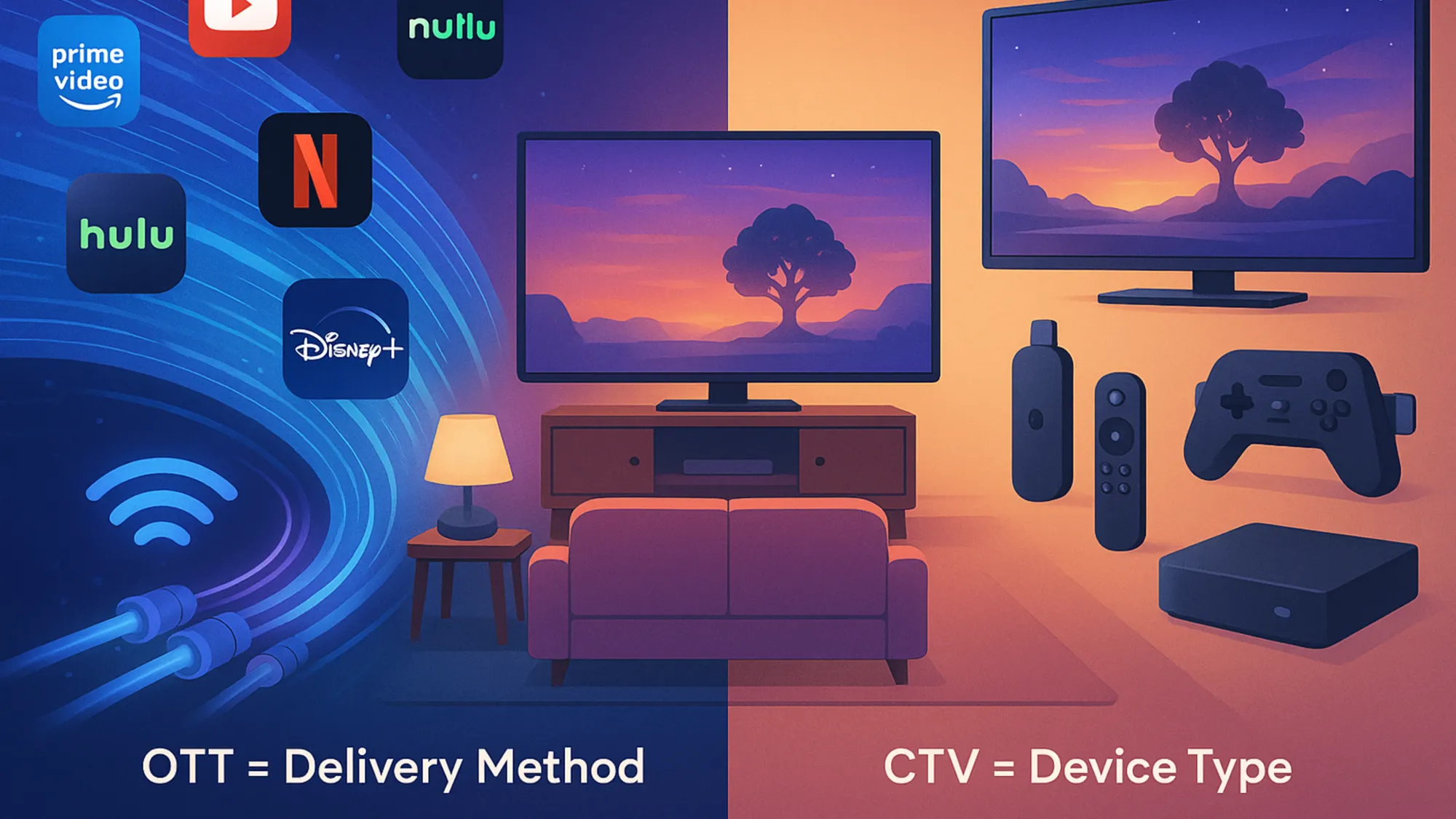Understanding the difference between OTT and CTV
OTT and CTV are two terms frequently used in digital advertising that are often confused.

OTT stands for "over the top" and refers to media content (audio, video, or other) that is transmitted via the internet without going through a cable operator or satellite set-top box. It describes the method of content delivery that bypasses traditional distribution channels.
OTT video advertising is specifically defined as a video commercial (pre-roll) presented before or during OTT video content on a television screen (as opposed to a desktop, smartphone, or tablet device)—either directly via a connected TV or through a streaming box.
Think of OTT as the delivery pipeline that carries content from providers to viewers through internet protocols rather than through traditional cable or satellite infrastructure.
CTV (Connected TV) refers to the device. CTVs and smart TVs refer to any types of TV screens that have built-in internet connectivity, allowing them to access a range of online services and stream digital video.
CTV devices include:
- Streaming devices, such as Roku and Amazon Fire
- Video game consoles that attach or connect to a television screen
- Smart TVs with integrated internet connections (Samsung Smart TV, etc.)
- Set top boxes: devices delivering traditional cable and video-on-demand (VOD) content
Critical relationship to understand
All CTV is OTT, but not all OTT is CTV.
This means:
- When someone watches Netflix on a smart TV, they're consuming OTT content on a CTV device
- When someone watches Netflix on an iPhone, they're consuming OTT content, but not on a CTV device
Why This Technical Distinction Matters
These differences have significant implications for advertising technology and strategy:
- Viewing Environment: The way consumers view OTT content differs drastically from the way they view content in desktop and mobile environments since they are typically in one place rather than on-the-go, and therefore, more relaxed.
- Serving Technology:
- Client-side ad insertion refers to when the video content and an ad are streamed separately as a playlist and are appended together by the client (browser or app) just in time for viewing.
- Server-side ad insertion (SSAI) puts the advertising technology into the hands of the publisher by allowing the sell-side provider to stitch their video and ad content together on the server level ahead of viewing time.
- Platform Ecosystem:
- MVPDs (Multichannel Video Program Distributors) are service providers that deliver TV programming services to the consumer, often charging a subscription fee. Examples include cable and satellite TV providers like Comcast Xfinity.
- vMVPDs (Virtual Multichannel Video Program Distributors) do not own the delivery network but use the open internet to distribute content. Examples include Dish's Sling and Hulu.
- OTT Platform Networks are operating systems and/or device manufacturers who sell media inventory without providing end-viewer content delivery or TV programming services, such as Roku.
- Targeting Capabilities: Advanced and automated targeting capabilities have become the norm in desktop and even mobile advertising, but they are just now making their way into the world of OTT advertising, and operate very differently in the TV ecosystem than they do in digital.

